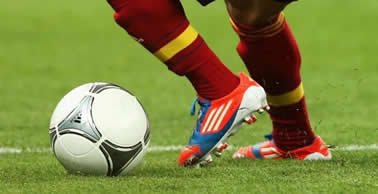Best Shoes for Shin Splints
 Medial Tibial Stress Syndrome (MTSS) or shin splints are very common in individuals who partake in certain exercises. It does not discriminate between recreational or professional athletes and can be present in those who are aggressive walkers, extreme runners, soccer or basketball players or even those who play racquetball or squash. How you deal with shin splints will depend on your own personal physical health, previous experience with shin splints and the advice from your doctor or qualified sports therapist. Medial Tibial Stress Syndrome (MTSS) or shin splints are very common in individuals who partake in certain exercises. It does not discriminate between recreational or professional athletes and can be present in those who are aggressive walkers, extreme runners, soccer or basketball players or even those who play racquetball or squash. How you deal with shin splints will depend on your own personal physical health, previous experience with shin splints and the advice from your doctor or qualified sports therapist.
There are many preventative measures that you can use in order to prevent shin splints or alleviate the symptoms of shin splints. Staying away from uneven surfaces while running, such as downhill, can help you avoid shin splints. Slowly building up resistance to long distance running is another proactive way to remain fit and keep yourself in top shape for running or playing sports. Try to gradually increase the time and intensity of your runs so that you do not put too much stress on your shins during your exercise time without proper training. Another ideal way to avoid shin splints is to have a great supportive shoe.
Firstly, if you find yourself with repetitive shin splint injuries you should have your running gait analyzed by a professional. Specialty running supply stores will typically have trained staff there who can assess your running style and recommend a shoe that could correct any abnormalities such as over-pronation. Once you figure out how you run, you can find the most ideal shoe that will suit you best.
You will want to stay away from minimalist shoes if you find yourself battling shin splints. Many barefoot runners will come to know that the arch support is just not there for them and they are more susceptible to shin splints as time goes on. Especially if you have flat feet or problems with your arches, you will want to be sure that you have the proper support and cushioning that is needed when you train for long periods of time.
If you have bought your perfect shoe and ran with it for some time, but are starting to have shin splint problems once again, it could be a sign that you need to purchase new shoes. Shoes are just like any other equipment: they will wear out with use. Try to keep track of when you purchase your new shoes and how many miles you put on them. If you start to notice shin splint symptoms again, be sure to discard your shoes and grab a new pair as soon as you can to avoid any discomfort during your training. Often when some athletes find the perfect shoe they will purchase more than one pair so that they can rotate between the two pairs, such as one for inside training and one for outside use.
Keep your receipt when purchasing new shoes! Many stores will accept the return of shoes with a receipt if you find after trying them for training that they give you any pain at all. Remember, not all shoes are meant as a one-size-fits-all type of shoe. Each brand and model will have different features and supports and what may work well for your friend may not be what works well for you. Do not be afraid to try a few different types of shoes so that you are certain you have the very best ones for you.
If you want a complete guide to picking the perfect shoe for your foot, check out the "Stop Shin Splints Forever" manual and its accompanying ebook "How To Pick The Perfect Shoe" by Gary Buchenic, a personal trainer and rehab specialist.

|